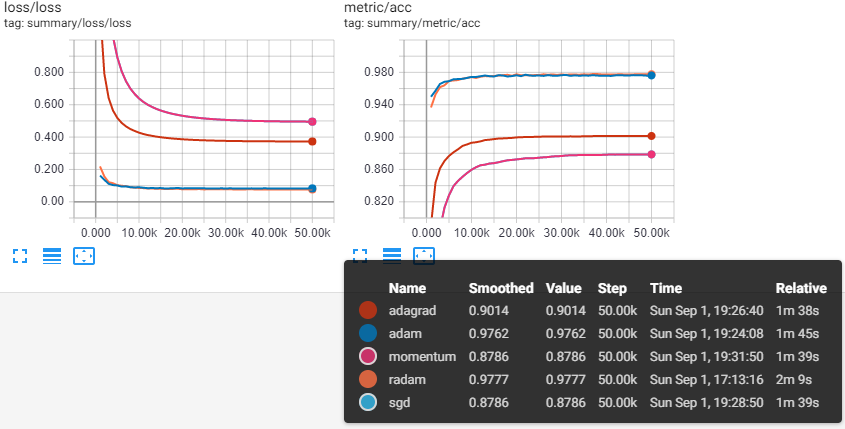On The Variance Of The Adaptive Learning Rate And Beyond in Tensorflow
This repo is based on pytorch impl repo
The learning rate warm-up for Adam is a must-have trick for stable training in certain situations (or eps tuning). But the underlying mechanism is largely unknown. In our study, we suggest one fundamental cause is the large variance of the adaptive learning rates, and provide both theoretical and empirical support evidence.
In addition to explaining why we should use warm-up, we also propose RAdam, a theoretically sound variant of Adam.
- Python 3.x
- Tensorflow 1.x (maybe 2.x)
# learning rate can be either a scalar or a tensor
# use exclude_from_weight_decay feature,
# if you wanna selectively disable updating weight-decayed weights
from radam import RAdamOptimizer
optimizer = RAdamOptimizer(
learning_rate=0.001,
beta1=0.9,
beta2=0.999,
epsilon=1e-6,
decay=0.,
warmup_proportion= 0.1,
weight_decay=0.,
exclude_from_weight_decay=['...'],
amsgrad=False,
)You can simply test the optimizers on MNIST Dataset w/ below model!
For RAdam optimizer,
python3 mnist_test --optimizer "radam"- impl warmup stage
Testing Accuracy & Loss among the optimizers on the several data sets w/ under same condition.
| Optimizer | Test Acc | Time | Etc |
|---|---|---|---|
| RAdam | 97.80% | 2m 9s | |
| Adam | 97.68% | 1m 45s | |
| AdaGrad | 90.14% | 1m 38s | |
| SGD | 87.86% | 1m 39s | |
| Momentum | 87.86% | 1m 39s | w/ nestrov |
% tested on GTX 1060 6GB
@article{liu2019radam,
title={On the Variance of the Adaptive Learning Rate and Beyond},
author={Liu, Liyuan and Jiang, Haoming and He, Pengcheng and Chen, Weizhu and Liu, Xiaodong and Gao, Jianfeng and Han, Jiawei},
journal={arXiv preprint arXiv:1908.03265},
year={2019}
}
Hyeongchan Kim / kozistr


